Elevate Your Greenspace! Expert care for vibrant lawns and thriving trees. Discover the Turfcor difference today and let nature flourish in your backyard.
The Spotted Lanternfly is a small, invasive insect that has been making headlines in recent years due to its rapid spread and destructive impact on trees and crops. Homeowners, farmers, and nature enthusiasts alike are all feeling the effects of this pest, which feeds on sap and can cause trees to weaken and die. It’s essential to be informed about the Spotted Lanternfly and the risks it presents, as well as how to identify and control its spread.
In this blog post, we’ll cover 7 key facts about this pest that everyone should know, from its origins to its preferred habitats to the steps you can take to keep it under control. So buckle up and get ready to learn all about the Spotted Lanternfly!
1. Origin and Distribution:
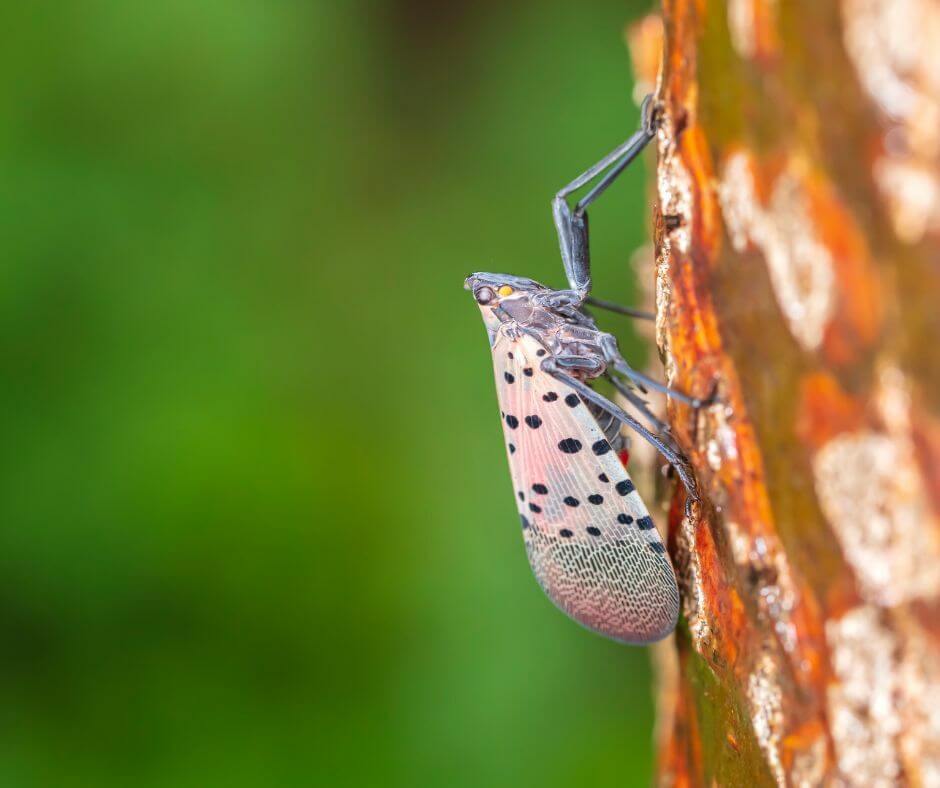 The spotted lanternfly, an intriguing yet potentially harmful insect, has its roots in China, India, and Vietnam. This invasive species first made its appearance in the United States in Pennsylvania in 2014 and, since then, has experienced a rapid surge across multiple states.
The spotted lanternfly, an intriguing yet potentially harmful insect, has its roots in China, India, and Vietnam. This invasive species first made its appearance in the United States in Pennsylvania in 2014 and, since then, has experienced a rapid surge across multiple states.
Predominantly found in the Northeastern regions, its territory has been progressively expanding. This rapid spread has led to its classification as an invasive species, a title it earned due to its detrimental effects on native ecosystems. With its foreign origins and swift colonization, understanding the spotted lanternfly’s origin and distribution is crucial to managing its impact.
2. Identification Features:
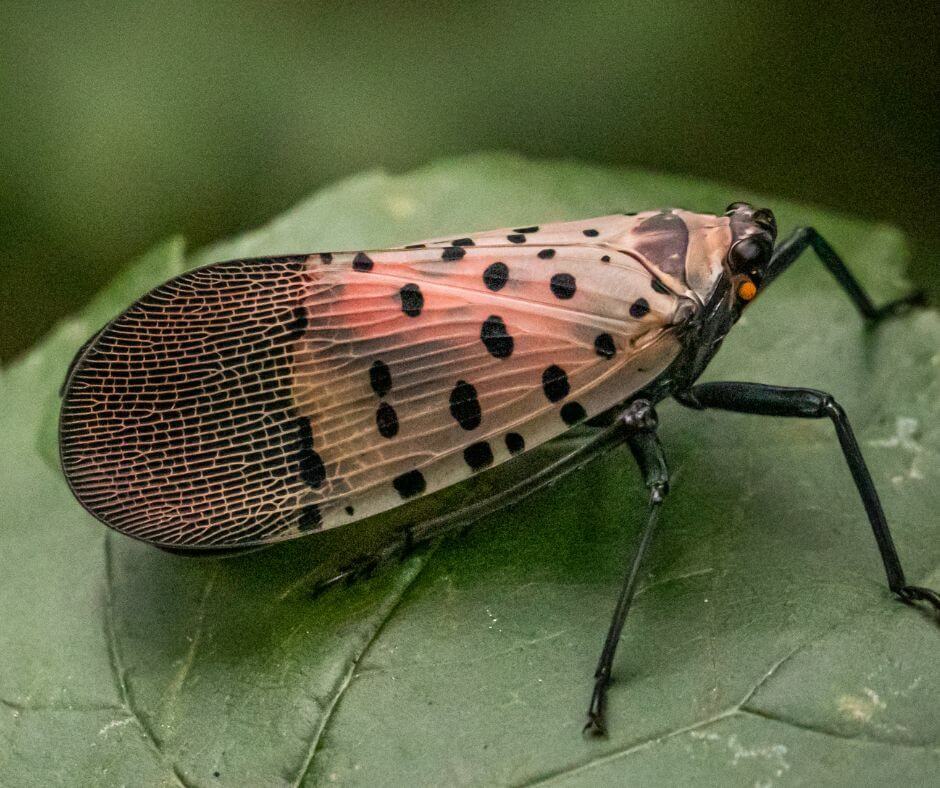 Recognizing the spotted lanternfly is made simpler by its unique and distinctive set of features. The insect proudly sports spotted wings, which display an unmistakable pattern that stands out in nature. Adult lanternflies present with grayish wings adorned with black spots, complemented by a bright red underbelly that contrasts vividly.
Recognizing the spotted lanternfly is made simpler by its unique and distinctive set of features. The insect proudly sports spotted wings, which display an unmistakable pattern that stands out in nature. Adult lanternflies present with grayish wings adorned with black spots, complemented by a bright red underbelly that contrasts vividly.
In their earlier stages, young nymphs exhibit a black coloration with white spots. However, as they mature, they undergo a transformation, adopting a reddish hue. As adults, these creatures are moderately sized, typically ranging from 1 to 1.5 inches. Moreover, their behavior offers another identification clue. Instead of flying as one might expect, they are more often seen hopping, a tendency that further sets them apart in the insect world.
3. Life-Cycle and Reproduction:
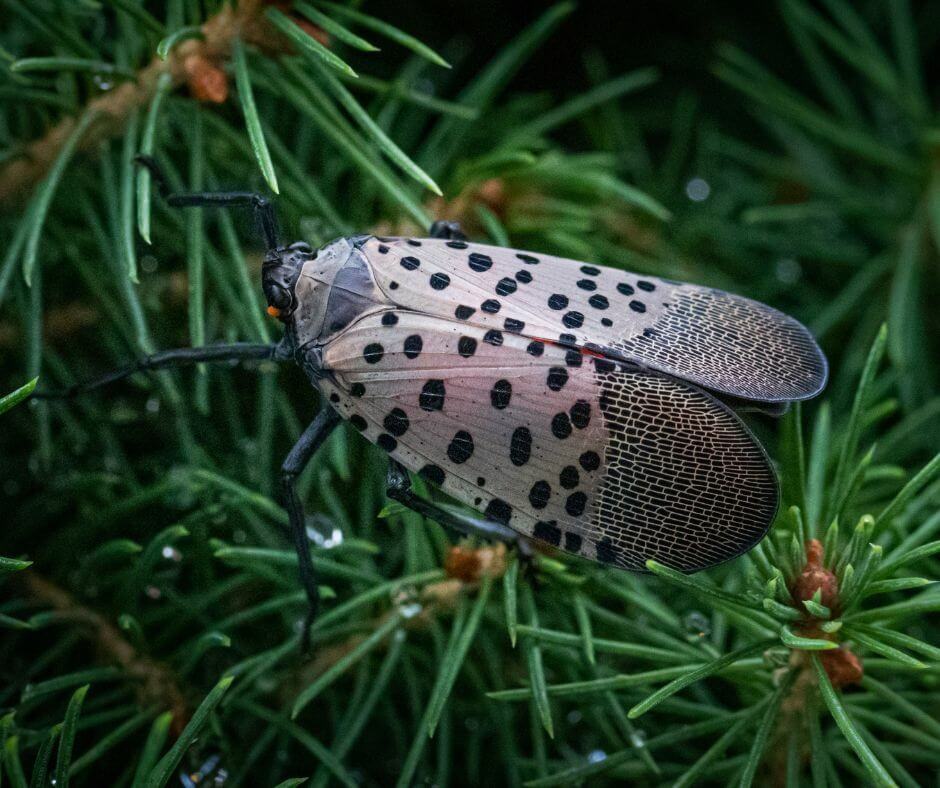 The journey of the spotted lanternfly is a fascinating one, starting as egg masses often found on smooth surfaces, particularly tree barks. These eggs, nestled closely together, give rise to nymphs which pass through four distinct stages before reaching adulthood. As they navigate through these phases, their appearance evolves, providing keen observers with visual markers of their growth progression.
The journey of the spotted lanternfly is a fascinating one, starting as egg masses often found on smooth surfaces, particularly tree barks. These eggs, nestled closely together, give rise to nymphs which pass through four distinct stages before reaching adulthood. As they navigate through these phases, their appearance evolves, providing keen observers with visual markers of their growth progression.
Adults typically make their appearance from July and can remain active up until December. Reproduction is another marvel of this species; a single egg mass can house up to 50 eggs, and a female has the capability to lay multiple such masses during her lifetime. This prolific reproductive potential underscores the need for effective management and control of their populations.
4. Preferred Host: The Tree of Heaven (Ailanthus altissima):
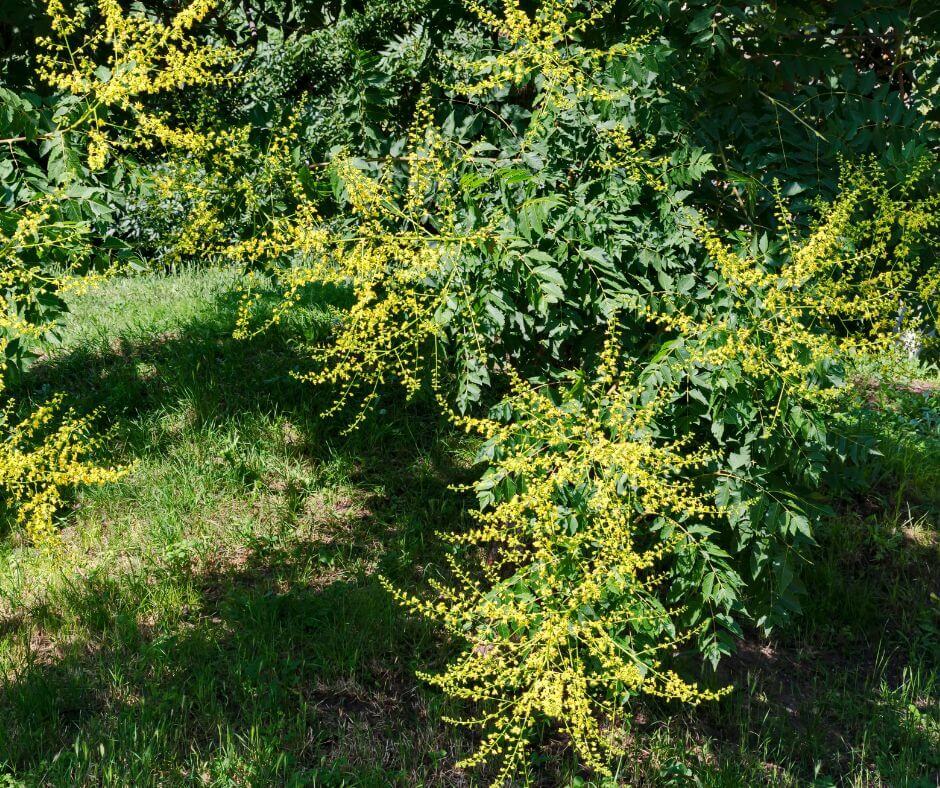 The spotted lanternfly’s relationship with the Tree of Heaven, or Ailanthus altissima, is notably symbiotic, revealing a strong preference for this particular tree species. Interestingly, the Tree of Heaven, like the lanternfly, is also an invasive species, having its origins in China. Often found lining highways, thriving in urban areas, or occupying disturbed lands, this tree offers the perfect habitat for the lanternfly.
The spotted lanternfly’s relationship with the Tree of Heaven, or Ailanthus altissima, is notably symbiotic, revealing a strong preference for this particular tree species. Interestingly, the Tree of Heaven, like the lanternfly, is also an invasive species, having its origins in China. Often found lining highways, thriving in urban areas, or occupying disturbed lands, this tree offers the perfect habitat for the lanternfly.
While the lanternfly can feed on a multitude of trees and plants, its undeniable affinity for the Tree of Heaven is both a biological marvel and a concern. Their mutual presence often magnifies environmental challenges, as both species tend to exacerbate local ecosystem disturbances. It’s a union that underscores the intricate web of invasive species dynamics and its broader implications.
5. Economic and Environmental Impact:
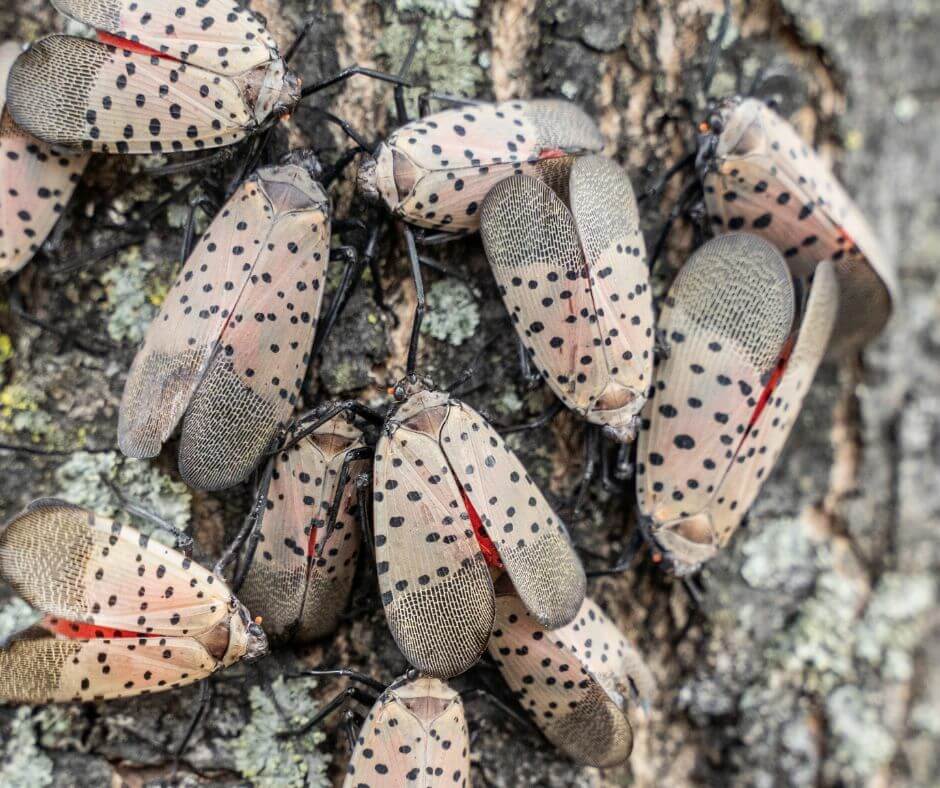 The arrival and proliferation of the spotted lanternfly have not been without consequences. Economically, they pose significant threats, particularly targeting crops such as grapevines, hops, and various hardwoods, affecting both yield and quality. Their feeding habits lead to the excretion of a sugary substance known as “honeydew.” This substance, while seemingly harmless, facilitates mold growth which can further damage crops, make outdoor recreational areas less enjoyable and attract other unwanted pests.
The arrival and proliferation of the spotted lanternfly have not been without consequences. Economically, they pose significant threats, particularly targeting crops such as grapevines, hops, and various hardwoods, affecting both yield and quality. Their feeding habits lead to the excretion of a sugary substance known as “honeydew.” This substance, while seemingly harmless, facilitates mold growth which can further damage crops, make outdoor recreational areas less enjoyable and attract other unwanted pests.
Beyond the economic repercussions, the environmental toll is equally concerning. The lanternfly’s presence disrupts local ecosystems, often outcompeting and overshadowing native species. The combined economic and environmental impacts of this invasive species underscore the urgency of addressing its unchecked spread.
6. Management and Control Methods:
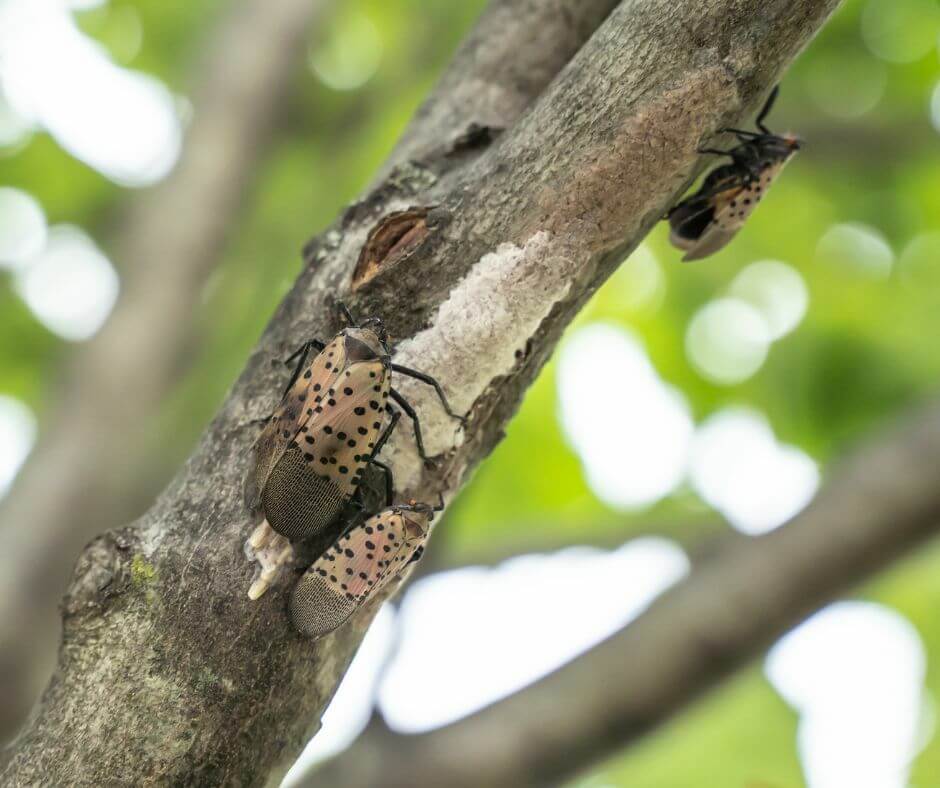 Controlling and managing the spotted lanternfly population requires a multifaceted approach. A popular method involves scraping and destroying their egg masses, thereby cutting down on the next generation’s population. Installing sticky bands around trees has also proved effective, as these bands trap nymphs and adults, preventing further breeding and feeding.
Controlling and managing the spotted lanternfly population requires a multifaceted approach. A popular method involves scraping and destroying their egg masses, thereby cutting down on the next generation’s population. Installing sticky bands around trees has also proved effective, as these bands trap nymphs and adults, preventing further breeding and feeding.
Chemical controls, utilizing specific insecticides, offer another line of defense, although care must be taken to ensure minimal impact on other wildlife. Nature, too, offers solutions; introducing natural predators, such as certain wasps and beetles, has shown potential in keeping lanternfly numbers in check. Beyond individual and local efforts, community-wide campaigns and public awareness initiatives are paramount. Through education and collaboration, the spread and impact of the spotted lanternfly can be mitigated.
7. The Importance of Reporting Sightings:
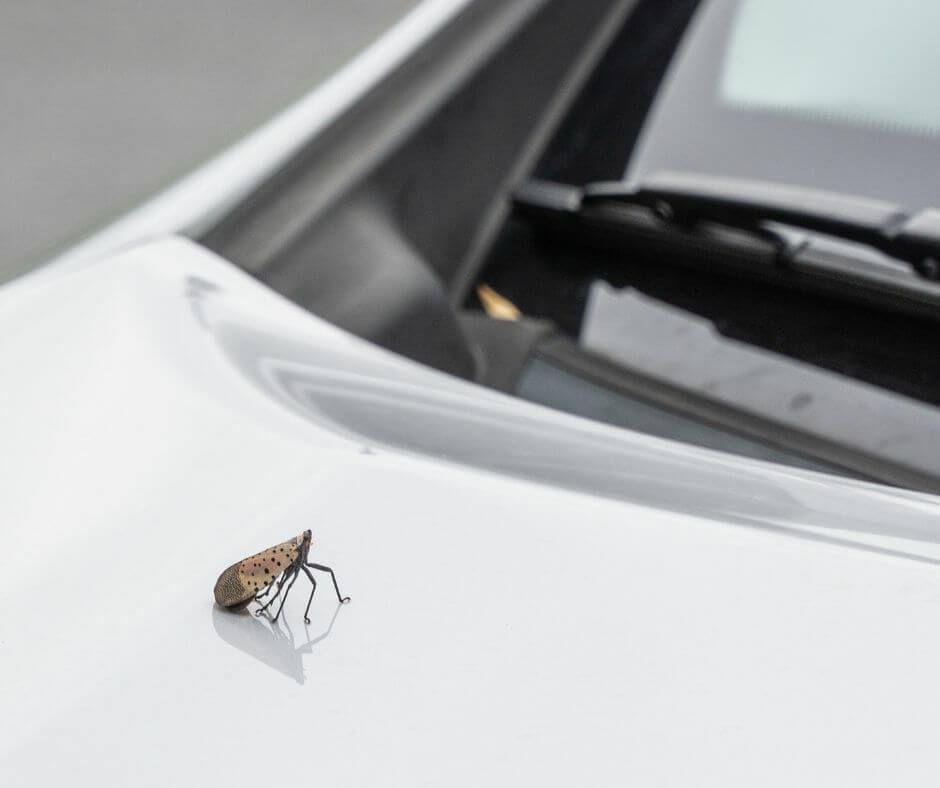 Vigilance is our strongest ally against the spotted lanternfly’s proliferation. Early detection, made possible by reporting sightings, can be instrumental in controlling their spread. Such reports equip scientists and authorities with valuable data, helping track the insect’s movements and predict potential infestations.
Vigilance is our strongest ally against the spotted lanternfly’s proliferation. Early detection, made possible by reporting sightings, can be instrumental in controlling their spread. Such reports equip scientists and authorities with valuable data, helping track the insect’s movements and predict potential infestations.
Many affected states have set up official websites and hotlines specifically for this purpose, facilitating easy and swift reporting. The more aware and proactive communities become, the better the chances of preventing further economic and environmental harm. Through collective effort and a spirit of community watchfulness, we can protect our ecosystems from this invasive species.
Addressing the Spotted Lanternfly Threat Together
The spotted lanternfly, while captivating in appearance, is a stark reminder of the challenges introduced species can pose. For farmers, homeowners, nature enthusiasts, and essentially anyone who cherishes balanced ecosystems, understanding and addressing this insect’s impact is of paramount importance. As we continue to study, monitor, and combat its spread, sharing knowledge and taking individual and collective actions becomes our most powerful weapon. Let’s remain vigilant, informed, and proactive, ensuring a harmonious coexistence with nature.